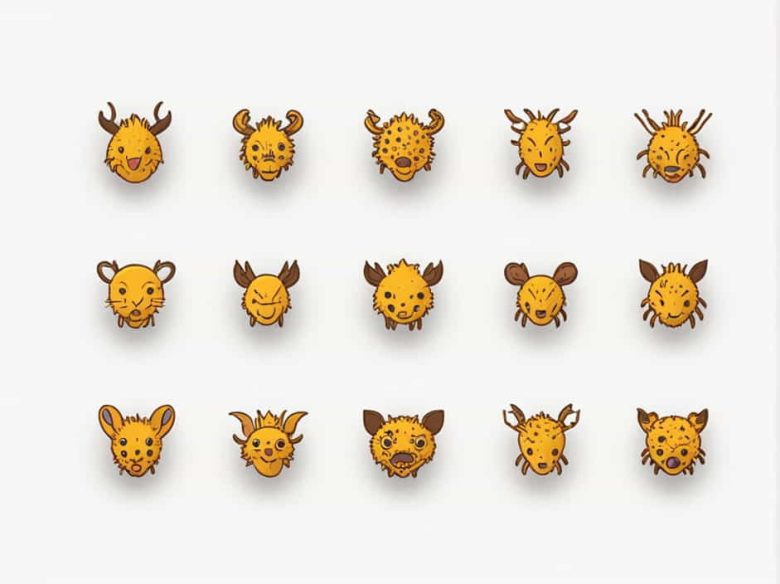Anthills are more than just homes for ants. These underground structures provide shelter to a variety of creatures that either coexist with ants prey on them or take advantage of their tunnels. From tiny insects to larger predators anthills are complex ecosystems filled with diverse species.
This topic explores the different creatures that live in anthills their roles and how they interact with ants.
1. Ants: The Primary Inhabitants
Ants are the architects of anthills. Different species build unique types of nests from simple tunnels to massive underground cities.
Common Ant Species in Anthills
- Fire Ants (Solenopsis invicta) – Known for their painful sting.
- Carpenter Ants (Camponotus sp.) – Create tunnels in wood.
- Leafcutter Ants (Atta sp.) – Carry leaves to grow fungus.
- Army Ants (Eciton sp.) – Move in large groups rarely staying in one place.
Each species has different nesting habits but all maintain strict social structures with a queen workers and soldiers.
2. Beetles: The Silent Intruders
Some beetles have developed a fascinating relationship with ants. Certain species live undetected inside anthills feeding on food supplies or even ant larvae.
Common Beetles Found in Anthills
- Clown Beetles (Histeridae) – Small shiny beetles that eat dead ants and waste.
- Rove Beetles (Staphylinidae) – Some species mimic ant pheromones to avoid detection.
- Ant-loving Beetles (Paussinae) – Release chemicals to pacify ants while they steal food.
These beetles rely on their chemical camouflage to live among ants without being attacked.
3. Myrmecophilous (Ant-Loving) Insects
Certain insects have evolved to live symbiotically with ants. Some offer benefits while others are parasites.
Examples of Myrmecophilous Insects
- Springtails (Collembola) – Tiny jumping insects that feed on decaying organic matter.
- Silverfish (Lepisma sp.) – Found in ant nests consuming dead insects and leftover food.
- Aphids – Some ant species “farm” aphids for their honeydew keeping them inside the nest.
These insects depend on ants for survival forming unique interdependent relationships.
4. Spiders: The Stealthy Predators
Some spider species have adapted to live inside or near anthills preying on ants or other small creatures.
Spiders That Live in Anthills
- Ant-mimic Spiders (Myrmarachne sp.) – Resemble ants to avoid detection while hunting.
- Trapdoor Spiders (Ctenizidae) – Build burrows near anthills to catch ants as they pass.
- Zodariid Spiders (Zodariidae) – Actively hunt ants using specialized hunting techniques.
These spiders use camouflage speed and patience to capture unsuspecting ants.
5. Centipedes: The Fast Hunters
Centipedes are aggressive predators found inside and around anthills. They use their speed and venomous fangs to capture ants and other insects.
Why Centipedes Thrive in Anthills
- Abundant Food Supply – Anthills are full of insects providing a steady food source.
- Moist Environment – Many centipedes prefer humid underground conditions.
- Protective Cover – The tunnels provide shelter from predators.
Larger centipede species can even prey on small vertebrates making them one of the most fearsome hunters inside anthills.
6. Flies: Parasites and Opportunists
Certain flies use anthills as breeding grounds or as a source of food. Some lay their eggs inside ant nests while others directly attack ants.
Types of Flies Found in Anthills
- Phorid Flies (Phoridae) – Parasitic flies that lay eggs inside ant bodies.
- Hoverflies (Syrphidae) – Their larvae may consume aphids that ants farm.
- Fungus Gnats (Sciaridae) – Thrive in the moist environment of anthills.
Flies play an important role in decomposition helping break down organic matter within the nest.
7. Worms and Other Soil Creatures
Anthills create nutrient-rich environments that attract various soil-dwelling organisms.
Common Worms in Anthills
- Earthworms (Lumbricidae) – Improve soil structure by aerating tunnels.
- Nematodes (Roundworms) – Some species parasitize ants affecting colony health.
- Flatworms (Platyhelminthes) – Predators that consume ant larvae.
These organisms contribute to soil health and decomposition making anthills important microhabitats in ecosystems.
8. Frogs and Lizards: Unexpected Visitors
Some small vertebrates take refuge in abandoned anthills or use them as hunting grounds.
Examples of Amphibians and Reptiles in Anthills
- Ant-Eating Frogs (Microhylidae) – Found in tropical regions feeding primarily on ants.
- Geckos – Hunt insects inside anthill tunnels.
- Blind Snakes (Typhlopidae) – Live inside anthills feeding on ant larvae and termites.
These creatures depend on anthills for food and protection from predators.
How Do These Creatures Survive in Anthills?
Living inside an anthill can be dangerous due to the ants’ defensive nature. However different creatures have developed survival strategies:
✔ Chemical Mimicry – Some beetles and spiders mimic ant pheromones.
✔ Speed and Agility – Centipedes and spiders rely on quick movements to escape attacks.
✔ Undetected Feeding – Many insects eat waste or dead ants avoiding confrontation.
✔ Mutualism – Aphids and springtails provide benefits to ants in exchange for protection.
These adaptations allow a diverse range of organisms to thrive inside anthills.
Anthills are more than just ant homes—they are entire ecosystems teeming with life. From beetles and spiders to worms and frogs numerous creatures rely on these underground structures for shelter food or hunting grounds.
Understanding the biodiversity of anthills helps scientists learn more about ecosystem balance species interactions and even potential pest control methods. While ants dominate their colonies the hidden world beneath the soil is far more complex than it seems.



